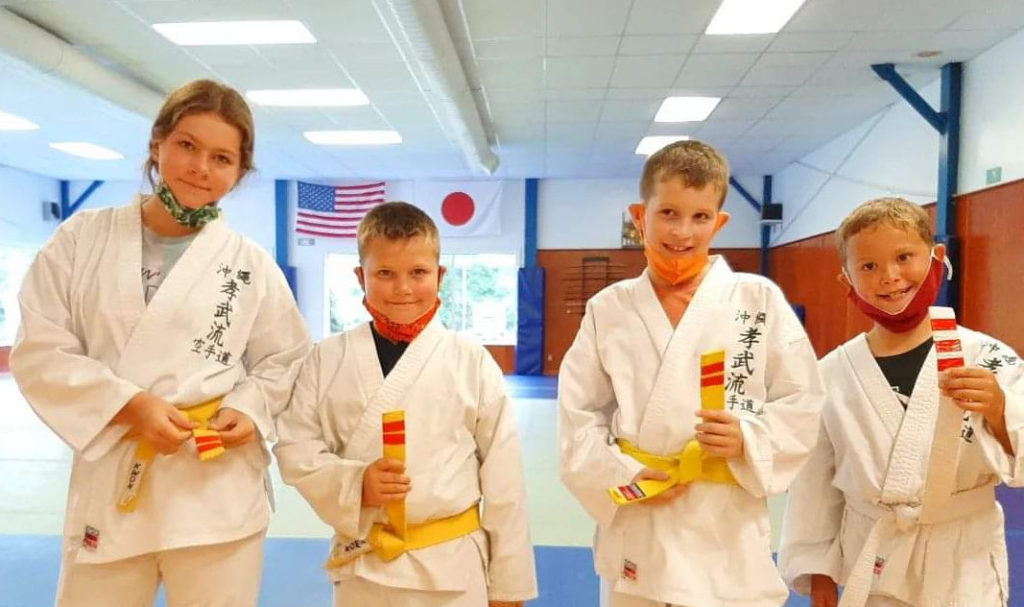Stripes for Kids
Achievements stripes are a great method to get kids more excited and engaged in their training. Achievement stripes are typically awarded from white belt through blue belt. At that point, the student is considered more self-motivated. The stripes can be any color except black.
The student may earn a maximum of four achievement stripes at each belt level. The sensei awards a stripe to recognize the student’s outstanding achievement in some area. The stripe is awarded during normal class time with special congratulations to the student for a job well done. Of course, when the student advances to another belt level he or she will have to begins again to earn stripes. This system is meant to be motivational so the achievements do not have to be huge. Recognized achievements may simply be learning to tie one’s own belt properly, counting from 1 to 10 in Japanese, demonstrating nice manners, whatever the sensei determines is exceptional for the student’s age and rank.
| Belt | Kid’s Achievement Stripes (any color but black) | |
| White belt | Up to 4 | |
| 10th Kyū | Yellow belt | Up to 4 |
| 9 th Kyū | Orange belt | Up to 4 |
| 8 th Kyū | Blue belt | Up to 4 |
The Michigan Kōburyū Kōbukai Approach
There is no defined way to handle the awarding of stripes, but the Michigan Kōburyū Kōbukai dōjō in Portage, Michigan, has a nice approach that is very motivational.
The test requirements have been divided into smaller pieces that can be achieved in any order. Achievements include technical skills, but also skills like manners and vocabulary The requirements are posted so all students know what is required. Stripes are handed out every couple of weeks at the end of class. On those days, tape and scissors are placed in a conspicuous spot so students know there will be stripes awarded at the end of class, adding to the excitement. However, no one knows who will get a stripe.
The award is a little ceremony during which the sensei speaks about the student’s achievements and how hard he or she has been practicing, promoting extra pride in the achievement. The sensei of the Michigan Kōburyū Kōbukai dōjō have found that after an award ceremony they will be swarmed by excited kids who want to know how they can get a stripe and how close they are. Though earning stripes is not required, they have found that students who have worked hard to achieve stripes do better on the upcoming test.


